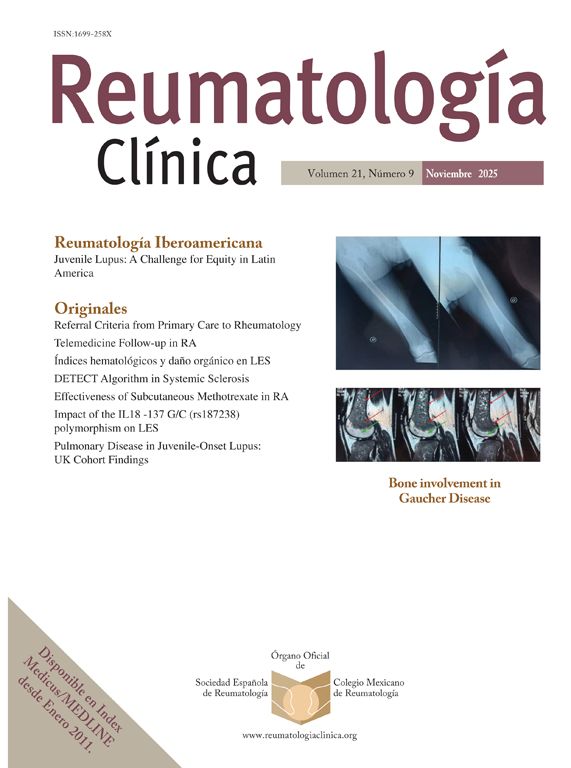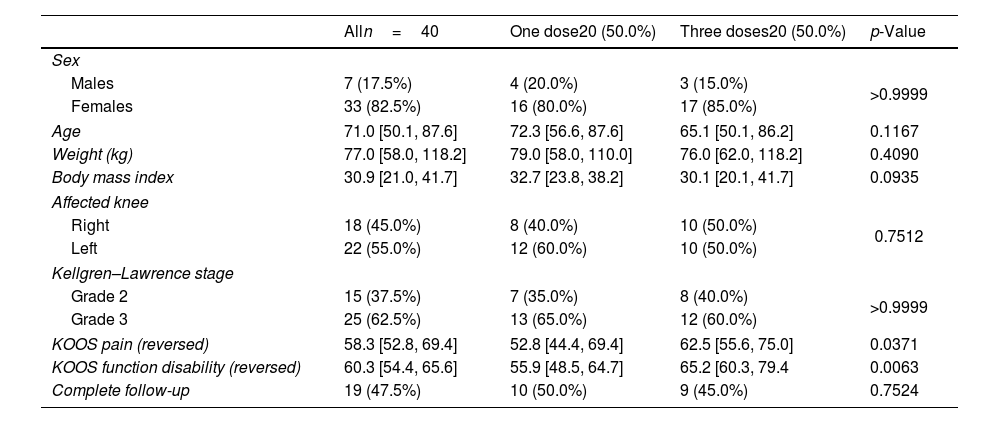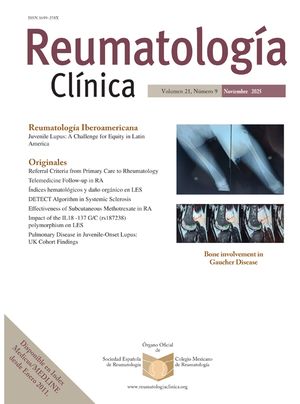At present, there is a lack of treatments specifically designed to target knee osteoarthritis (KOA). Various intra-articular products have widespread and become commonplace in clinical practice, despite a scarcity of evidence supporting this procedure. Among these, SARC stands out as a novel Autologous Cytokine-Rich Serum derived from the patient's own platelets and white blood cells. This pilot study aims to assess the effectiveness of SARC treatment by measuring improvements in pain and physical disability in patients with symptomatic KOA.
MethodsWe recruited 40 symptomatic KOA patients with Kellgren–Lawrence stage 2 or 3, who had been refractory to glucocorticoid intra-articular treatment in the past year. They were assigned to two regimens (single vs. three-dose administrations), and were evaluated for their change in pain and physical function using the KOOS questionnaires at various time points over one year.
ResultsAt one year after treatment, 36% and 33% of patients achieved a 20% improvement in pain and functional disability, respectively. Patients treated with three intra-articular SARC injections showed a slightly higher improvement (40%) than the single-dose group (26–32%), although differences were not statistically significant. In average, both reversed KOOS scores showed significant improvements compared to baseline, especially for the three-dose group (14 and 16 points, respectively; p-values <0.0001). No adverse events were reported during the study.
ConclusionA notable proportion of patients with KOA refractory to a previous glucocorticoid injection responded positively to intra-articular SARC treatment. Further studies are required to validate these findings and identify biomarkers of treatment response.
Actualmente, existe una carencia de tratamientos específicamente diseñados para tratar la artrosis de rodilla (KOA). Se han testado distintos productos intraarticulares en pràctica clínica aunque con escasa evidencia. Entre ellos, destaca el SARC, un novedoso Suero Autólogo Rico en Citoquinas derivado de las propias plaquetas y leucocitos del paciente. Este estudio piloto tiene como objetivo evaluar la eficacia del tratamiento con SARC mediante la medición de la mejoría del dolor y la discapacidad física en pacientes con KOA sintomática.
MétodosSe reclutaron 40 pacientes con KOA sintomática en estadio 2 o 3 de Kellgren-Lawrence, que no habían respondido al tratamiento intraarticular con glucocorticoides en el último año. Los participantes fueron asignados a dos regímenes (una única administración contra tres administraciones), evaluándose el cambio en el dolor y la función física mediante los cuestionarios KOOS en distintos puntos temporales durante un año.
ResultadosAl año del tratamiento, el 36% y el 33% de los pacientes alcanzaron una mejoría del 20% en el dolor y en la discapacidad funcional, respectivamente. Los pacientes tratados con tres inyecciones intraarticulares de SARC mostraron una mejora ligeramente superior (40%) que el grupo de dosis única (26%-32%), aunque las diferencias no fueron estadísticamente significativas. En promedio, ambas puntuaciones KOOS invertidas mostraron mejoras significativas respecto al inicio, especialmente en el grupo de tres dosis (14 y 16 puntos, respectivamente; valores de p<0,0001). No se observaron eventos adversos durante el estudio.
ConclusiónUna proporción relevante de pacientes con KOA refractaria a una inyección previa de glucocorticoides respondió positivamente al tratamiento intraarticular con SARC. Se requieren estudios adicionales para validar estos hallazgos e identificar biomarcadores de respuesta al tratamiento.












